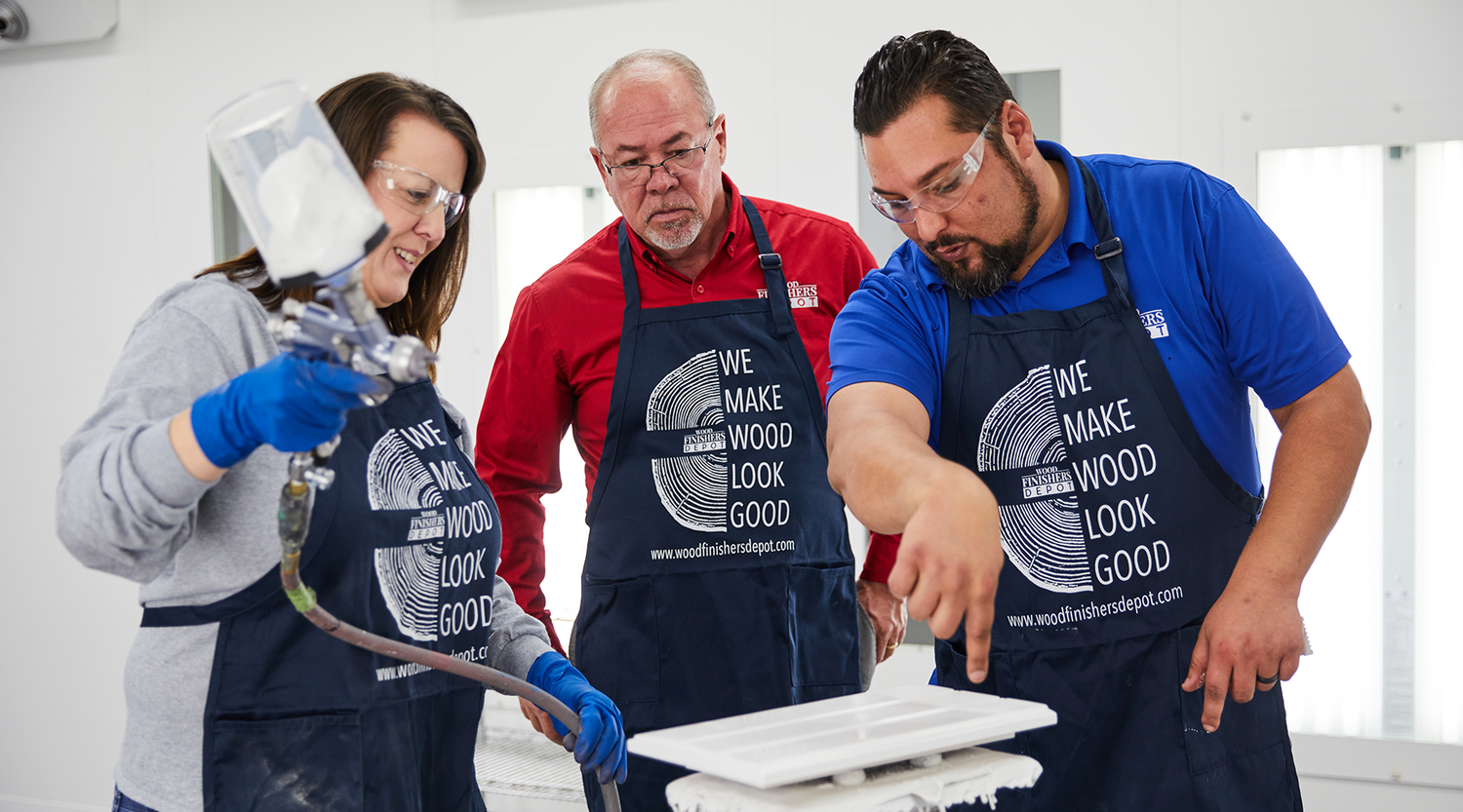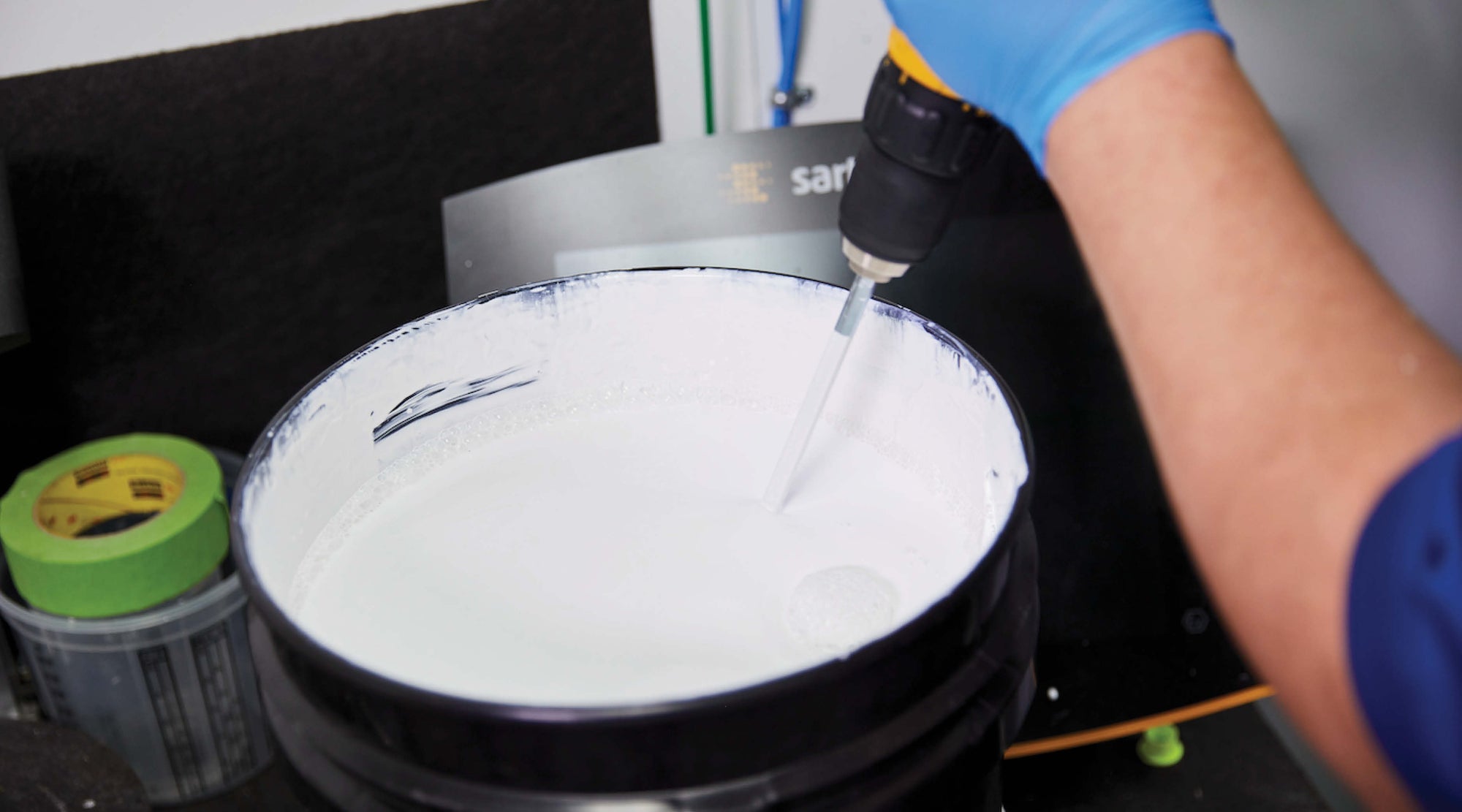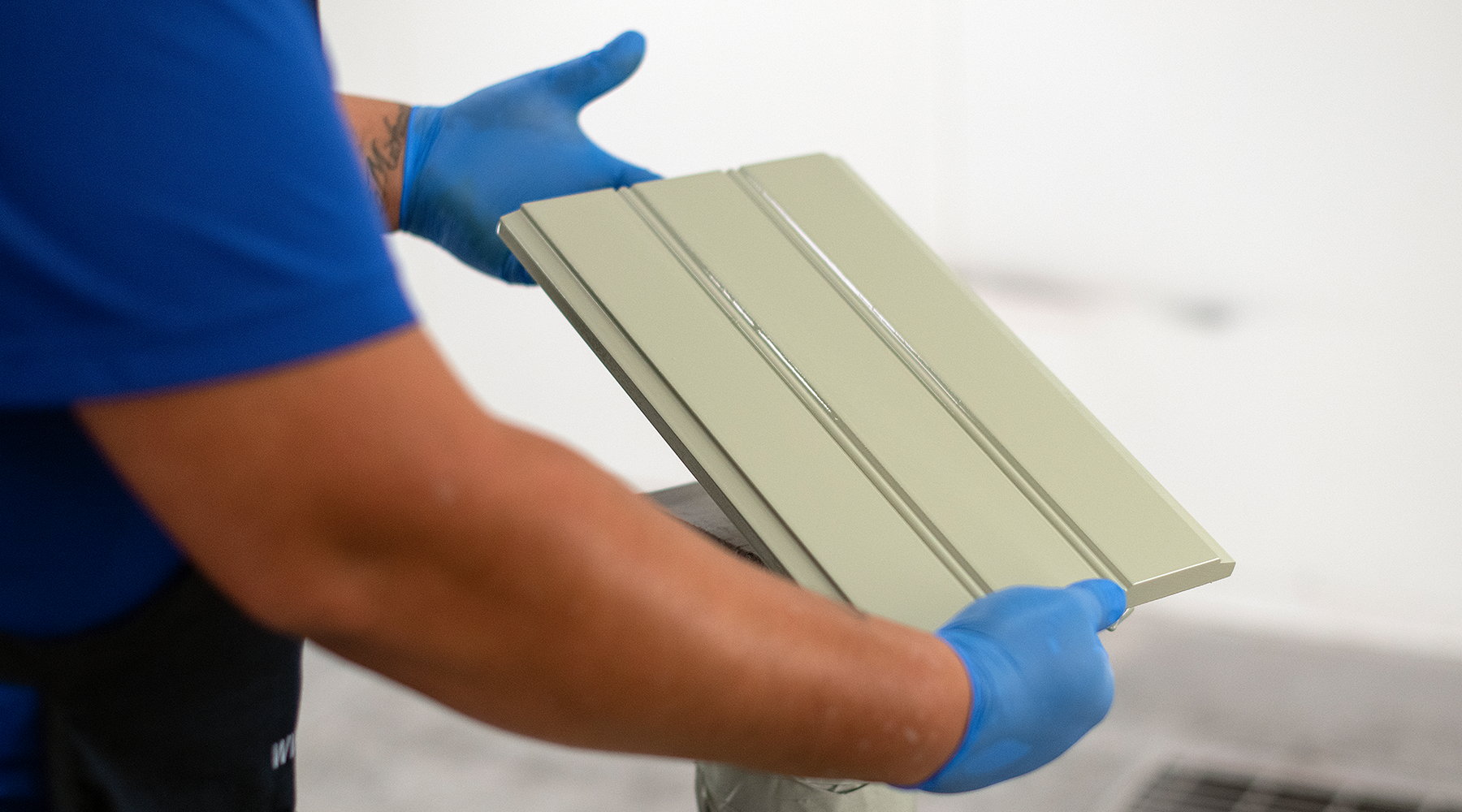By Terry Parrish, Finishers Depot Co-Founder
If I have heard it once, I've heard it a million times from cabinet and millwork owners and managers.
"I'm not sure what type of wood finish we use or how we apply it. The finishers just get it done.”
Why is it so common that a few key people in the finishing department make all finishing decisions without management's involvement, effectively holding the entire company hostage?
Because owners and managers typically know very little about wood finishing products and the wood finishing process, if there is a process, or take the time to learn it. This lack of attention says to the business that it is not that important.
Take a look at the overall challenge that owners and managers need to address. Then, I’ll unpack some simple steps that will help improve your finishing department, reduce costs, and improve profitability.
How to Support the Wood Finishing Process
The good news is it's not that difficult to begin addressing common issues and take back control of your finishing department. Besides, taking the time to get involved will likely improve your overall cost, efficiencies, and quality. You simply can’t afford to continue sitting on the sidelines!
Understand Why the Wood Finish Process is Important
Think about it. What is the first thing that your customer sees when they look at your company’s product? It is probably not the drawer construction or the quality of the hinges (even though I'm sure they're great). It is the aesthetic "look and feel" of the overall product.
The president of a very high-end furniture manufacturer once said the first thing people see is the form and finish. Said another way, they see the color and design. He felt that if the customer didn't like his finish and/or design, he had little to no chance of telling them the rest of his story. They simply wouldn't care if his product had the best veneers, hardware, or construction.
The bottom line is that a poor finish can greatly diminish the perceived value of your product. Conversely, a poorly constructed cabinet may be perceived as having higher value because of the quality of the finish. It’s sad but true!
Understand How to Hold Finishers Accountable
It's rare when finishing departments are held accountable for anything but getting products out the door. The quality of the product they produce, quality control issues, and the applied cost per square foot are usually not routinely measured. But for business owners and managers, these things really matter the most.
If you don’t know the wood finishing process inside and out, how can you hold your team accountable for getting the job done correctly and efficiently?
Unless your finishing department is held responsible for its output, costs, and efficiencies, it is a fair guess that they are just doing what they've always done. Or, they are most likely just doing what is the most comfortable for them with no thought to the company's profits or efficiencies.
The key is not to blame staff for shortcomings. After all, it is inherent to human nature to resist change unless motivated to do something different. Get involved so that you can have productive conversations with your team to drive toward positive change.
6 Steps to Improve the Wood Finish Process
How do you begin improving the finishing department to grow profits? Get involved! Most cabinet and millwork business owners and managers enjoy the challenge of building or milling wood. But most have no idea or desire to learn about finishing.
While you don't have to be a finishing technology guru, you do need to begin placing an emphasis and start participating in the finishing process. The attitude and overall culture of the finishing department begins at the top with ownership and managers.
The following are six steps to consider when implementing changes in your finishing business.
1. Encourage Learning and Development
Over the past 50+ years, wood coating technologies and applications have evolved at a very fast pace. The finishing industry, its products, and the technology used to apply each type of finishing are subject to frequent change. Your finishing department needs to stay on top of this ever-changing world.
Every change that comes along may or may not fit your business model, but you need a system to evaluate these changes and challenge your staff to decide what to explore or dismiss. Anything short of this effort may cause your competitors to pass you by.
2. Make Finishing Part of Your Product
Finishing should be no different than touting the latest hinge quality or construction technique. Finishing is an integral part of your product and should be a portion of promoting your overall quality and commitment. Your company has to get this right to fully complete each customer order.
3. Make Your Finishing Department a Marketing Differentiator
In a world that gets more competitive every day, your finishing department can set you apart. Customers, especially custom customers, recognize and will pay for the aesthetic they want. Cabinets or millwork that is different than what everyone else provides has more value.
4. Track Your Finish Quality and Applied Costs
The price per gallon is just the start, but what really matters the most is your final cost per square foot, including labor and overhead.
A performance matrix is just as important as anything else you currently track. Once your staff recognizes your commitment to relentlessly improving these costs, then attitudes (and costs) will begin to change.
5. Enhance Your Processes to Provide Consistent Results
Finishing has the reputation of being overly complex. But the reality is that if you minimize or eliminate the inconsistencies in your environment, your finishing department will also become more consistent.
Not only will processes make you consistent, but they will make you more efficient, too. Efficiencies save costs and increase operating margins, which is something no company wants to pass up in today's competitive world.
6. Rely on Your Finish Provider as a Trusted Advisor
Ordering products is so much more than just buying gallons of finish. Your supplier should be up-to-date with the latest changes or developments in the industry. You should work with a finishing supplier who possesses these characteristics:
- Committed to keeping you updated and involved in all things required to apply a quality finish.
- A professional organization that truly knows and is focused on what you're doing.
In today's fast-moving world, you want to partner with a coatings supplier like Finishers Depot, not just a coatings re-seller that has limited knowledge of how to utilize finishing products.
Finishers Depot: Your Partner to Enhance the Wood Finishing Process
We have identified a few critical steps that you can consider implementing. Owners and managers that emphasize these steps in an area that is so often overlooked will be able to change the culture of the finishing department and create a positive business impact.
Looking for a partner to help improve quality and reduce costs? Talk to us today about partnering with our team for your wood finishing needs. We are here to help grow your business!


